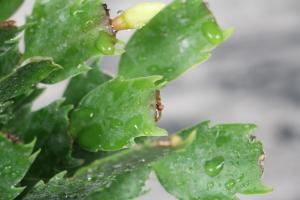Introduction
Springtails are tiny, wingless insects that belong to the Collembola order. These creatures are found in almost every habitat on earth, including soils, leaf litter, and decaying wood. Springtails are often considered to be beneficial for gardeners as they help break down organic matter and improve soil health. But are they good for plants?
What are Springtails?
Springtails are small, soft-bodied insects that measure about 0.2 to 12 millimeters in length. There are more than 6,000 species of springtails, and they are found in every part of the world. Springtails get their name from their ability to jump up to 100 times their body length, thanks to a mechanism called the furcula. They do not have wings, and their bodies are shaped like a tiny carrot.
How do Springtails Affect Plants?
Springtails can have both positive and negative effects on plants. These insects are considered beneficial for soil health as they consume decaying organic matter, and help break it down into smaller particles that are more readily available to plants. Additionally, they aerate the soil and help increase its water-holding capacity. In doing so, they provide a healthy environment for root growth and support overall plant health.
However, sometimes springtails can become overpopulated, leading to negative effects on plants. When the population of springtails is too high, they can begin to feast on root hairs and other plant tissues. This can damage the plant's root system, leading to weakened growth and even death. Additionally, springtails can be a nuisance if they start to invade plant foliage or become too concentrated in one area.
Controlling Springtails in the Garden
If you are experiencing an overpopulation of springtails in your garden, there are several methods you can use to control their numbers. One option is to introduce natural predators, such as nematodes, to your garden. Nematodes are microscopic worms that feed on springtails and can help to reduce their population.
Another option is to reduce moisture levels in your garden. Springtails thrive in moist environments, so by reducing moisture, you can make your garden less hospitable to them. Additionally, you can try creating a barrier around your plants using diatomaceous earth or neem oil. These substances help keep springtails away from your plants, reducing the chance of damage.
In Conclusion
So, are springtails good for plants? The answer is it depends. Springtails can be beneficial for soil health, but they can also cause damage to plant root systems if their population becomes too high. By using the methods mentioned above, you can control springtails in your garden and help support plant health.

 how many times do yo...
how many times do yo... how many planted tre...
how many planted tre... how many pine trees ...
how many pine trees ... how many pecan trees...
how many pecan trees... how many plants comp...
how many plants comp... how many plants can ...
how many plants can ... how many plants and ...
how many plants and ... how many pepper plan...
how many pepper plan...
































